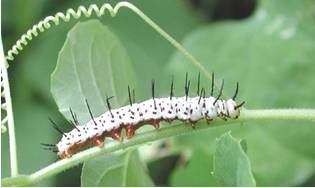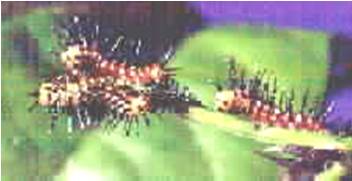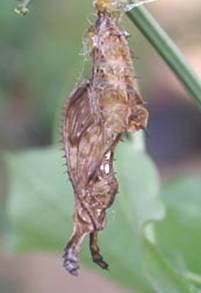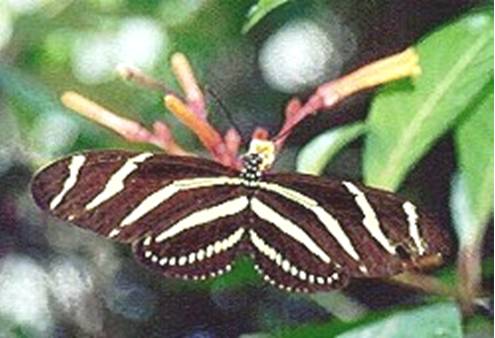Habitat: Open woodland and forest edges
Garden Abundance: Moderate
Wingspan: Up to 3.5 inches
Range: Throughout the southeastern US
Larval Host Plants: maypop (Passiflora incarnata) and other passion vines
Favorite Adult Nectar Sources: firebush (Hamelia patens), lantana (Lantana camera), and porterweed (Stachytarpheta spp.)
Zebra Longwing
Heliconius charitonius
Aptly named, the Zebra Longwing is a black butterfly with yellow-white stripes and extremely elongated wings. Its unique appearance and slow, graceful flight, make it a snap to identify and a fun butterfly to watch. Fond of forest edges and woodland trails, it rarely spends long periods of time in open, sunny locations but is a common visitor to the shadier gardens and yards. A member of a primarily tropical genus, the Zebra Longwing cannot survive freezing temperatures in any life stage. Although a year-round resident only in South Florida, it regularly establishes colonies throughout the Gulf Coast states each summer. Adults may survive for up to four months, making it one of the longest-lived butterflies in the region.



The small yellow, cone-shaped eggs are laid in clusters on the new growth or tendrils of passion vines, preferring Corky-stemmed Passion vines (P. subarosa), Maypop (P. incarnata) and Purple Passion (P. 'Incense'). Females preferably select vines growing only in shady locations for laying eggs. By contrast, passion vines located or planted in sunny spots are utilized almost exclusively by Gulf Fritillary butterflies (Agraulis vanillae). The young larvae feed together on the tender new growth and mature rapidly. Full-grown larvae are white with several rows of black spines and are covered with black dots. The chrysalis is brown to tan and resembles a dead leaf. It has two horn-like projections that hang down from the head and resemble jaws or the legs of a spider.
The Zebra Longwing is the state butterfly of Florida





